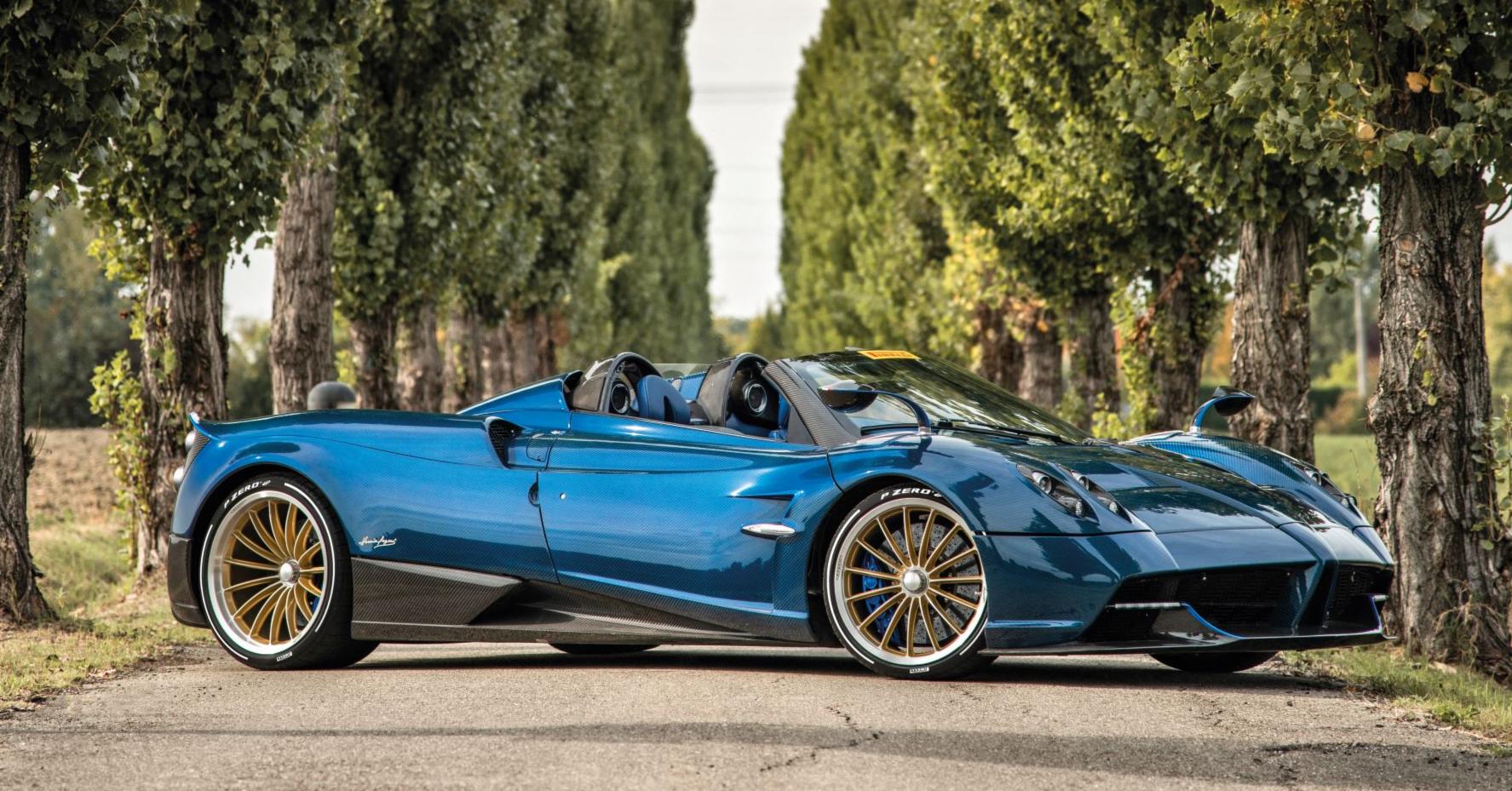Behind the Wheel of The Completely Insane $2.4 Million Pagani Huayra Roadster
This glorious Italian supercar boasts a 230 mph top speed and an eye-watering sub-three second zero to 60 time.
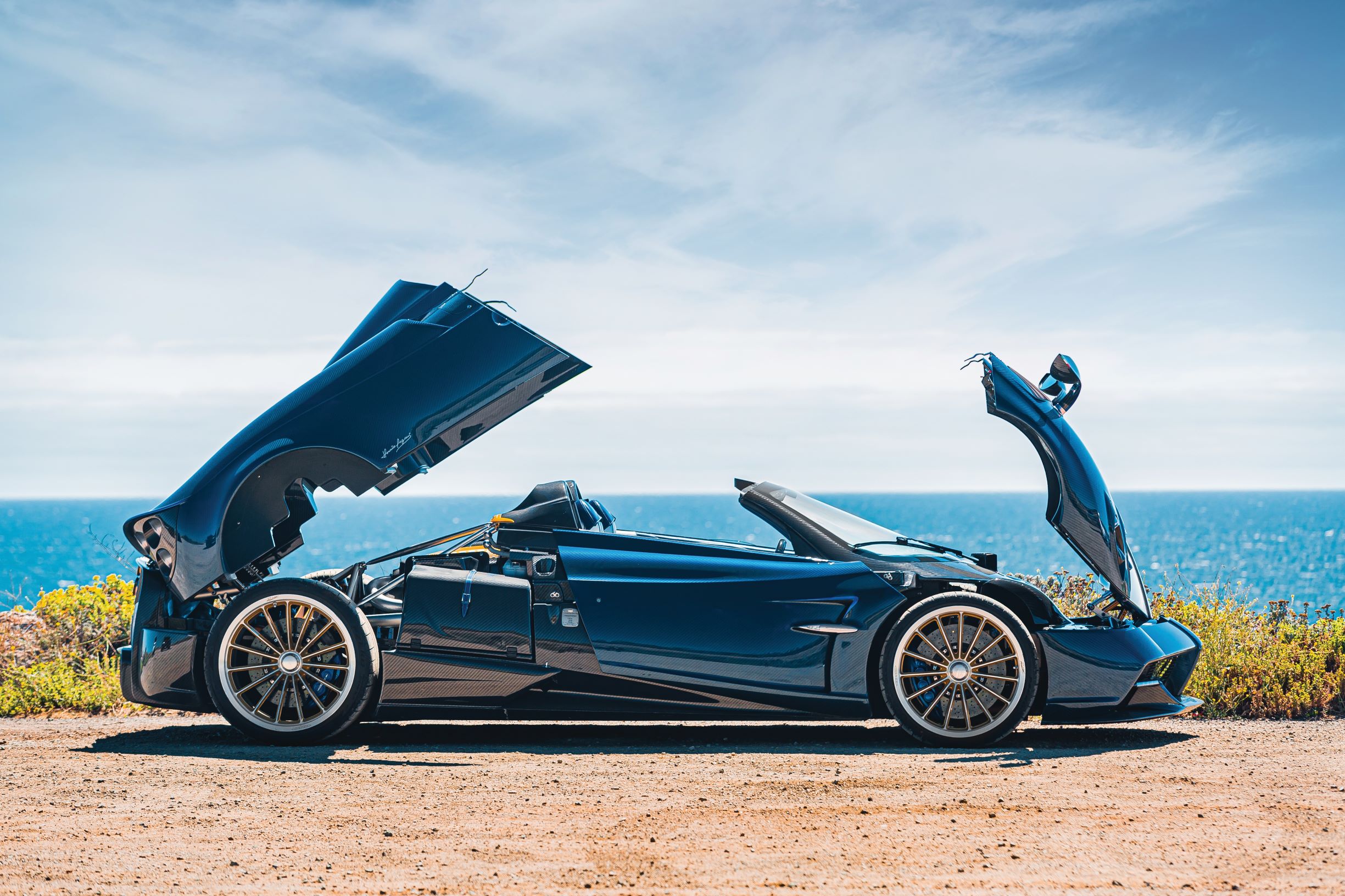
There’s a Pagani Huayra Roadster sitting out in the early morning sun awaiting me. Crouched like an enormous, midnight blue cicada, silent and still in the Napa Valley mist. Dew glimmering on herringbone-patterned carbon fiber coachwork. Elegant lines easy on the eye belying the power that obviously lies beneath. Ready to spring forward into the wind. Ready to fly.
There’s no signature symphony from her wings and vents yet as she rests in a peaceful slumber. But when she fires up, every petrolhead for miles around will know and be beckoned by her siren call. A symphony crescendoing to philharmonic levels when she’s in full flight. A steampunk cacophony complete with timpani, tuba, horns, drums and whistling flutes, which reverberates your internal organs and resonates in your soul.
An otherworldly creature; sounding like Chitty-Chitty Bang-Bang tuned by Beelzebub with bespoke parts from Back to the Future’s timetraveling steam locomotive. And almost fast enough to cross the timespace continuum yourself and arrive before you left.

Of course, she is a car. But a car like almost no other. A car that is part of a story that has defined the course of thrills both visual and visceral for a generation. Powerful enough to inspire young boys and girls to plaster their bedroom walls with high-octane fantasies. Powerful enough to have grown men part with enough money to sail around the world, get fired into space several times over, or pick up a country estate. If you have a cool $2.4 million to spend, perhaps you can ponder what your alternatives are. Hell, even if you don’t, you should, as it may well lead back here.
Clearly this is the stuff of dreams. But it is really the stuff of the dreams of a young Argentine called Horacio Pagani, growing up in a small town in the Argentinian countryside in the 1950s. Watching his father bake bread, his mother make art, and dreaming of Ferrari, Lamborghini, and Maserati in between as he crafted his own miniature car models. Scouring Reader’s Digest with a thirst for the knowledge that could get him to the Mecca of supercar production in Italy—Modena.
An article he finds by chance leading him to Leonardo da Vinci. And to a viewpoint which some might say then shaped years of diligence and hard work and eventually led to his outrageous success. Outrageous because it is not normal for a poor baker’s son to will himself into becoming an icon of the supercar-manufacturing glitterati. And for outrageous results, a new vision was required. That vision was borrowed from the man who many see as the defining genius of the Renaissance. Painter, draftsman, sculptor, architect, and engineer, da Vinci proposed that, “Art and Science are two disciplines that must walk together hand in hand.” And Horacio Pagani listened.
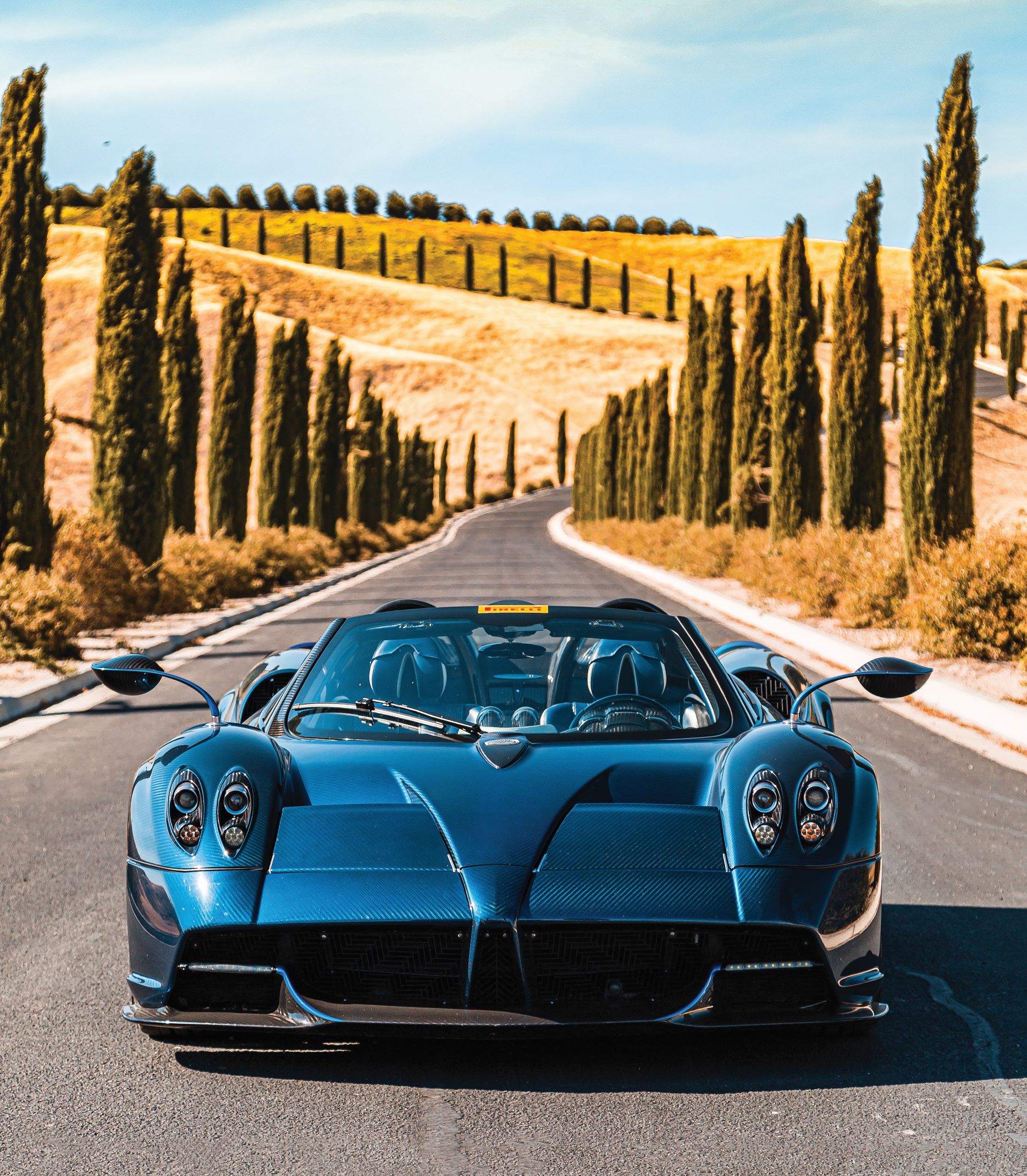
In the late 1980s he founded Modena Design, financed with a bank loan and a prayer. And became the proud owner of an industrial autoclave he could use to cure composite materials in a building not far from his former employer Lamborghini in Modena. By day projects for Renault, Ferrari, Aprilia and others filled the order books and kept the lights on. But it was by night that the magic happened. That was when Horacio went into Tony Stark mode.
At the 1993 Geneva Motor Show he was introduced to the chief engineer of Mercedes-Benz, Dieter Zetsche, who agreed to to supply him with a V12 Mercedes-Benz M120 engine pumping out 450 German horses for his prototype, dubbed Fangio F-1 in honor of Pagani’s mentor, legendary F1 driver Juan Manuel Fangio. The result exploded onto the automotive scene in 1999 like a supernova. The renamed Fangio F-1, now known as the Pagani Zonda C-12, blew the competition into the weeds. More fighter jet than car, its iconic design remains jaw-dropping to this day. The Zonda would go on to trounce the lap record on the Nordschlief at the Nürburgring, and literally stand in a class of its own. A fully handmade, bespoke rocket ship which cast caution and commercial committee decisions to the wind.
It is important to understand this history, as it is often lost in pretty pictures of these glorious machines. Decades of struggle, commitment and focus went into creating such superlative results. On my first meeting with Horacio Pagani in 2012 he had just wheeled his new model, the Huayra, out of the factory in Modena. We met, and exchanged cordial greetings, as I pondered the magnificence of the cars in the showroom. In the factory I witnessed the DNA of the foundation of Pagani’s success firsthand—his small team of highly-skilled artisans hand laying the carbon fiber for the monocoque of the cars. The engineers and mechanics building the cars, fitting the mighty AMG MercedesBenz V12 engines, the Brembo brakes, the Pirelli tires, and all of the other intricate elements which turned science into art. And I decided that by hook or by crook I would somehow get to pilot one of these masterpieces.
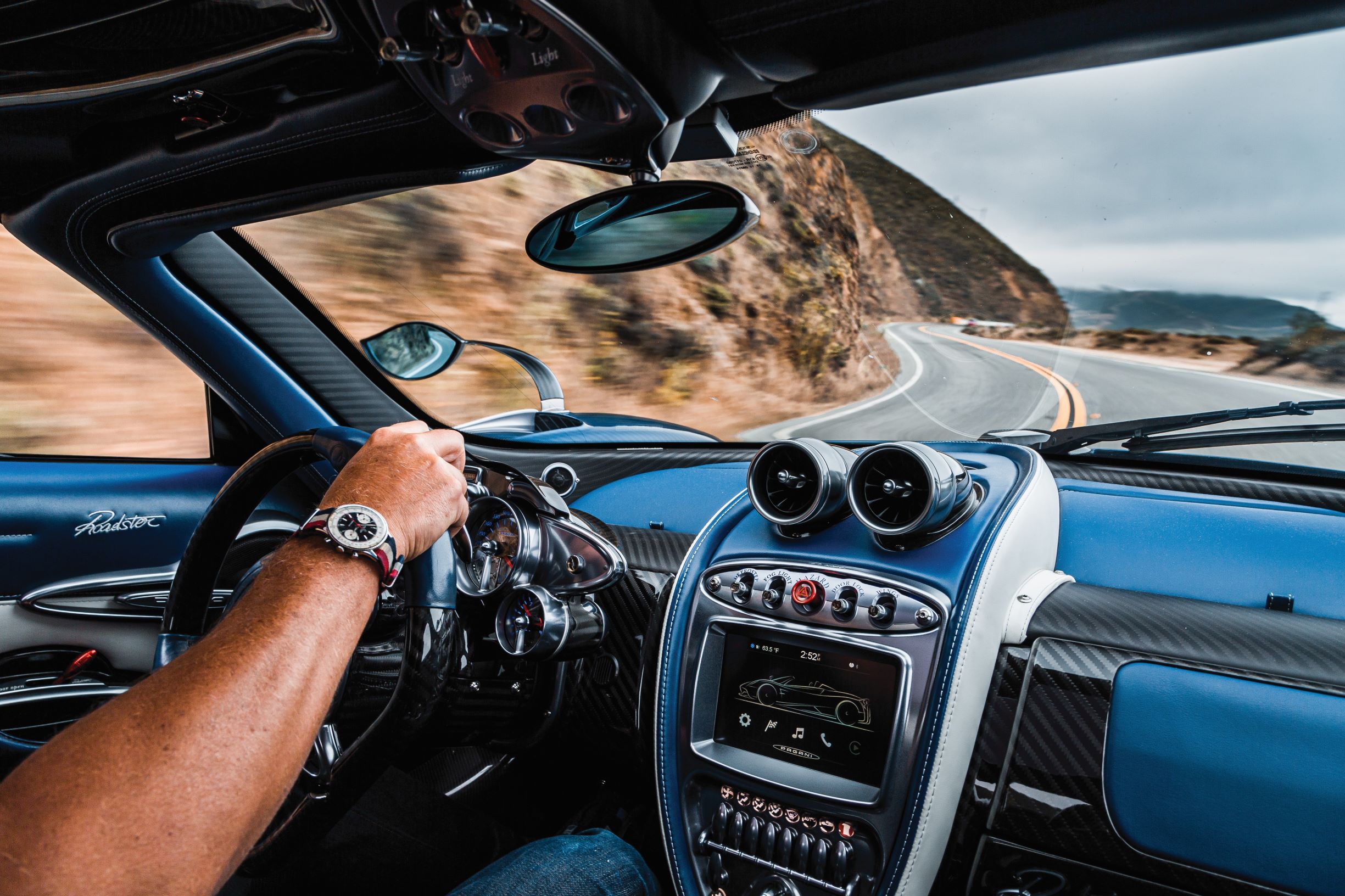
And so, to my Pagani Huayra Roadster sitting out in the early morning sun awaiting me. Did she fly? You bet your ass she did—as fast as the mythical wind she was named after, and then some. Horacio likes to joke that his clients rarely even ask how fast his cars are. But with 775 hp on tap from the 6 liters of her AMG twin turbocharged engine, zero to 60 mph goes by in an eye-watering sub-three seconds, and you’ll see the far side of 230 mph if you are looking to teleport yourself back to 1971 and chase Steve McQueen up the Mulsanne Straight at Le Mans. Strapping in with the obligatory co-pilot it was difficult not to feel as if I had been shoehorned into something transported to Earth through a portal from another dimension.
We escaped the traffic of San Francisco and headed south for one of the most glorious stretches of road in the world, Route 1. A stretch I know well enough to understand where I can engage hyperspace, and where a sandal-flapping granola-cruncher may wander out unannounced from the trees. After getting comfortable with the ergonomics of her controls, and a good feel for what was what, it was time to take a deep breath, close my eyes, punch it, and hold on for dear life. That moment of truth where the rubber truly hits the road; and where you sometimes run out of balls long before you run out of road.
Except that wasn’t happening. Which was weird. We went around corners faster and faster until it became eminently clear I wasn’t going to run out of balls, and she wasn’t going to run out of grip. But what was going to happen was I was going to end up sore from pulling more G’s than John Glenn in a centrifuge. With my heart beating in unison with the growling bowels of Beelzebub, whistling and roaring a few inches behind my head, I planted my foot and ripped through the gears in a series of rapid controlled explosions up the tarmac.
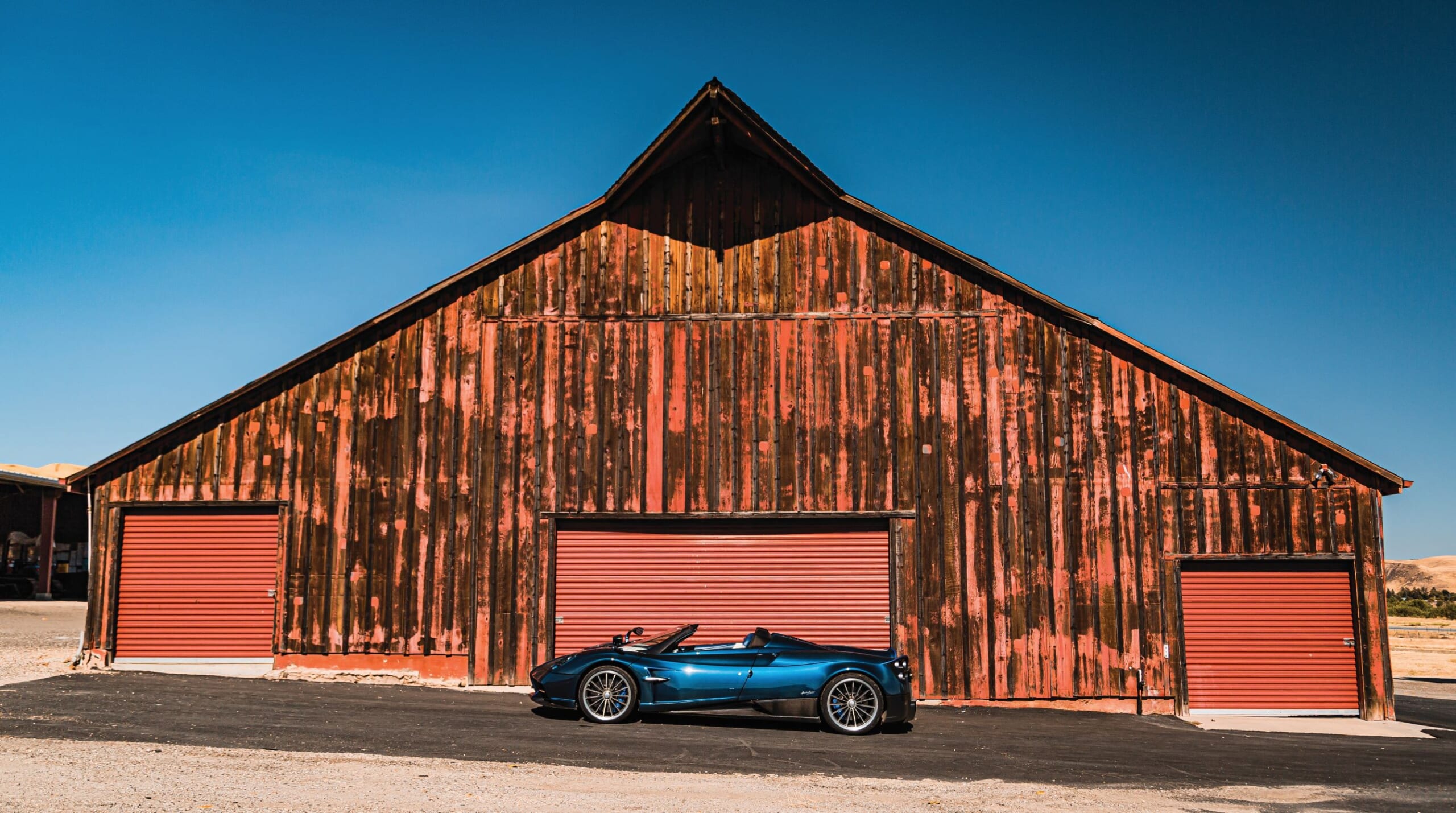
The massive torque from the V12 thumping me in the back as we accelerated to the redline limiter faster than the blink of an eye. Each new cog precisely selected by a light pull on the steering-mounted paddle and the lightweight single-plate clutch on our way to attacking the brakes; and reveling in the bite and grip as her body panels cracked open flipping up wings front and back to decelerate us in record time to turn into the apex. This thing couldn’t have been more glued to the road if Pirelli and Pagani had smeared my tires with Gorilla Glue before we left.
Driving the Pagani Huayra Roadster takes you to another place in space and time. It is light, fast, and phenomenally beautiful. But what also separates it from the crowded landscape it now inhabits is the custom nature of every element. Like the most skilled bespoke tailoring houses, Pagani manages to take the very powerful vision of one man, and translate it through the wants and desires of his very special clientele with an attention to detail almost impossible to understand without experiencing it. And, as is the case with a truly bespoke suit, once you have experienced what this means, you can never go back.
By the time you have saved up the millions of dollars required to turn Pagani’s dream into your own, and to collaborate on a bespoke piece of art that melds science and beauty through materials science, technology, and enormous numbers of man hours of skilled craftsmanship, the Huayra may be no more. But I can almost guarantee you that whatever Pagani does create for you, it will be an otherworldly experience. And in life, we can rarely ask for more.
